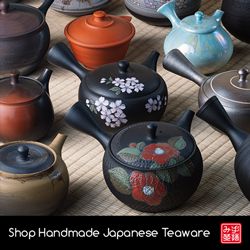
Manjū (饅頭) is a steamed cake which originally comes from Chinese cuisine, but now it is a common Japanese sweet.
This wagashi looks very similar to the daifuku, but the difference is that it isn’t made with glutinous rice.
The most basic manjū is made with wheat flour, sugar, and it is filled with anko (red bean paste).
However, there are many different manjū to choose from.
Let me list some of them:
Types of manjū
Chamanjū: The basic ingredients for this type of manjū are wheat flour, brown sugar, anko, and a leavening agent such a baking powder or yeast.
Jōyomanjū: The dough is made with Chinese yam and rice flour.
Sakamanjū: Uses yeast starter for sake in order to ferment the wheat flour.
Shiomimanjū: It has a hard exterior made from rice flour and sugar, and there is salt mixed with the anko.
Yakimanjū: Once steamed, the manjū is further cooked until it gets a brown color and it is covered with a sauce that has miso.
Kurimanjū: It has a filling made with chestnut, or its shape resembles a chestnut.
Kuzumanjū: The dough is transparent because it is made with kudzu starch.
Mizumanjū: Similar to kuzumanjū but the dough has bracken starch.
Fumanjū: Made with fu (wheat gluten).
Misomanjū: This time the dough is made with wheat flour and miso.
Onimanjū: It has pieces of yam.




